Castagnoli, south of Gaiole in Chianti, is a small, stone-built village surmounted by a medieval fortress. Known as the Rocca di Castagnoli, this stark fortress was besieged by the Sienese in 1478. This is Chianti castle country, with Castagnoli surveying Castello di Meleto, a medieval outpost which is now centred on a wine estate, even if the castle itself is also open for visits. From both the Rocca and the village extend views of spindly cypresses, olive groves, olives and vineyards. Rocca di Castagnoli wines are worth sampling before you set off to explore grander Chianti Classico estates. The countryside from Castagnoli south to Siena and east to Arezzo is higher, wilder and wetter. The wooded peaks are green and fresh with the scents of thyme, rosemary and pine. Deep chestnut woods provide ideal cover for wild boar, which often end up on your plate, paired by the local wines.
Are you inspired to visit Tuscany and explore a region rich in culture, beauty and history? Explore our collection of villas near Castagnoli to start planning your Tuscan holiday today.
We are here to help. Reach out to our Villa Specialists for personalised recommendations.
Castagnoli
-
-
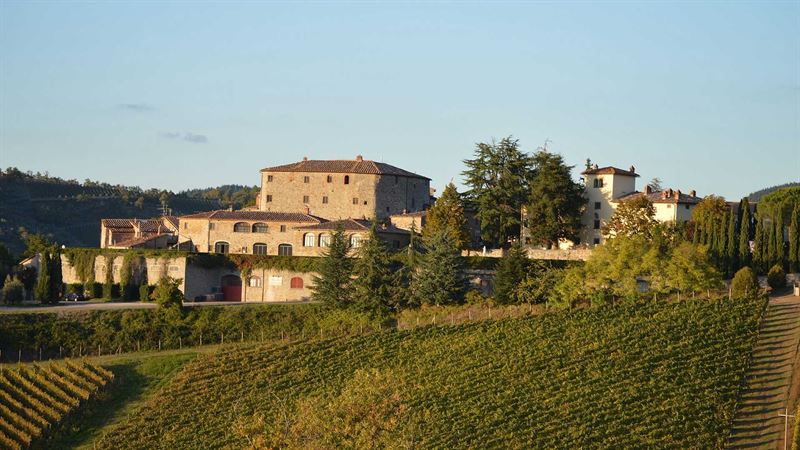
Top Things To Do
Castagnoli lies in the southern Chianti and so, despite its sleepiness, is well-placed for cultural outings to Siena, Gaiole in Chianti and Radda in Chianti. Montepulciano, San Gimignano and Florence are further away but still make tempting day trips for culture-lovers. Closer to home, it’s all about dining in delightful inns and indulging in wine-tastings, often in castles or abbeys. Luckily, you can also explore the Chianti in a more energetic way, whether by Vespa, on an electric bike, or even on horseback.
This is just a taster to the Chianti. See our specific guides to top Chianti outposts, all accessed through our Destinations listings. -
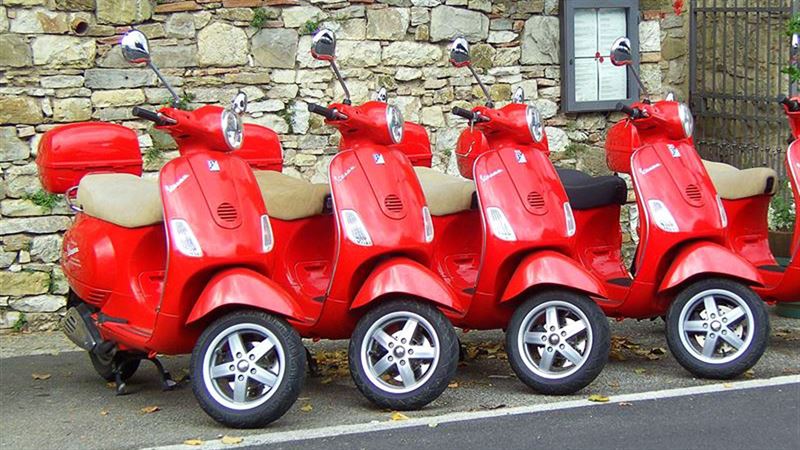
1. Vineyards on a Vespa
Tired of museums and madonnas? Head for the wine-producing hills on a Vespa. The rolling slopes are planted with olive groves that shimmer dark green and dusty silver. Spanning the hills between Florence and Siena, Chiantishire is a gentle vision of olive groves, cypresses, vineyards and villa gardens. This is the perfect terrain for exploring on a Vespa or even a vintage scooter. A typical Vespa tour will follow the Chianti trail and feature a rustic lunch on a wine estate. Tuck into Tuscan antipasti and red wine. You can even ride pillion with a guide if you think you might overdo it on the Chianti. Iconic and utterly Italian, the Vespa scooter is a fun and authentic way to explore Tuscany.
As for the itinerary, vary it over a couple of days. Delightfully torn between tradition and creativity - like the contradictory Tuscans themselves - the wine scene allows for a duality between provenance and personality. If you’re interested in important estates that double as castles, abbeys or villas, then there’s a great choice locally. Try the abbey estate of Badia a Coltibuono to the north, or the grand estate of Castello di Brolio to the south.
Also visit a few smaller wineries, where the mood is more hands-on than at grander Tuscan estates. Near Lecchi in Chianti the family-run wine and oil estate of Azienda Agricola Casanuova di Ama is homely and hard to leave. The tour may well be with the owner, Daniela, and include a light lunch. Also close to Lecchi is the Castello di Ama winery, perfect for combining with a contemporary art and sculpture tour of the grounds. Just south, slightly closer to Vagliagli, are the wine estates of Dievole and Castello di Selvole, both of which have recommended restaurants.
New Tuscany Scooter Rental
Address:Via Il Prato, 50r, 50123 Firenze FI
Tel: +39 055 538 5045
Web: www.vesparental.eu
Vespa Rent Lucca
Address:Via Teresa Bandettini 197
55100 – Lucca (Italy)
Tel: +39 333 1113095
Web: https://www.vesparentlucca.it/ -
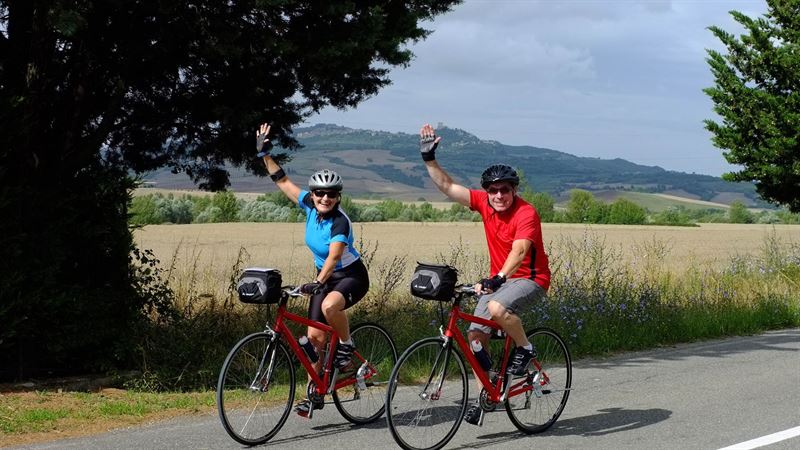
2. Easy electric-biking before dinner in Gaiole in Chianti
Castagnoli is a mere 6 km south of Gaiole in Chianti, a sleepy Chianti market town. The attractions mostly lie outside town and are best viewed on a smooth cycling trail that takes in the countryside, castles and wine estates south of Gaiole. This is prime cycling country so make the most of it, even if you are not a fitness fiend on a racing bike. Best of all, you can do it on an electric bike on a full-day or half-day tour. These power-assisted bicycles are easy to use, even for first-timers or families.
The reason the Chianti is so scenic is because it's so hilly. If you lack thighs of steel or the desire to face steepish ascents, then consider an e-bike. Based in Gaiole, Tuscany E-bike Rental run guided or self-guided e-bike tours in the Chianti area. On downhill slopes, they work like a conventional bicycle but on long, flat runs or if you’re going uphill, the electric motor cuts in and provides the help you need to reach your destination without breaking into a sweat. The e-bikes can be rented for as little as an hour or as long as a week. One typical guided route from Gaiole could take in the rolling hills of the Chianti, the Castello di Brolio and distant views of Siena. All this includes a light lunch and wine-tasting on an atmospheric estate. This particular tour is a three-hour, 46 km affair reaching an altitude of 518 metres. There are plenty of easier or more challenging routes available.
After returning your bikes, consider dinner in L’Osteria al Ponte in Gaiole, a fuss-free, family-friendly inn. As a reward for your cycling exertions, dine on crostini neri, tagliatelle with truffles, wild boar stew, or pasta with porcini mushrooms. Sit on the summery terrace and knock back a glass or two of the underrated local Chianti Classico from Rocca di Castagnoli or Castello di San Sano estates.
If you’d rather cycle in the countryside south of Castagnoli, closer to Castelnuovo Beradenga, then book a guided cycle ride with Chianti Bicycles, including a sunset tour on hybrid bikes.
Address: Tuscany E-bike Rental
Via Roma 82
53013
Gaiole in Chianti
Tel: 0577 749355
Web: www.tuscanyebikerental.com -
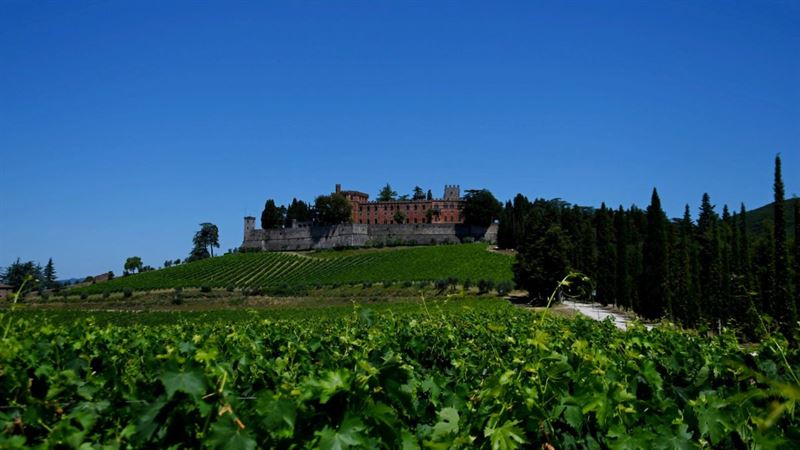
3. Castello di Brolio – the birthplace of Chianti Classico
Set around 7km south of Castagnoli, Brolio Castle makes for a memorable day out. As well as a ramble through Chianti wine history, take in the sweeping vineyard views from the ramparts. Of the many Florentine castles in the woods, Castello di Brolio is the most impressive – not least because of its views over the original Chianti vineyards stretching as far as Siena and Monte Amiata.
Tuscan aristocrats, including the Antinori and Frescobaldi families, have often been making wine since Renaissance times. Baron Ricasoli, whose descendants now run the castle, first designated the grape mixes to be used in Chianti wine. In the mid19th-century, Barone Bettino Ricasoli capitalised on improvements in production and spearheaded the modernisation of wine-making, with the establishment of the Chianti Classico brand. Essentially, Barone Bettino Ricasoli founded the modern Chianti wine industry, with his wine business continued by the present family. A Chianti consortium, the Consorzio Chianti Classico, acts as a quality control for all Chianti Classico produced in the region. The designated symbol, the gallo nero (black cockerel) designates quality.
Book a visit to the castle gardens and cellars. Tour the estate, taste the wines, and see the family museum. The sunset tour is the most private and includes dinner in L’Osteria del Castello, the Ricasoli’s restaurant. Your castle ticket also allows for a free wine-tasting in the Ricasoli tasting rooms below the castle. Sample Barone Ricasoli Castello di Brolio Chianti Classico 2006.
Address: Castello di Brolio
Loc. Madonna a Brolio
53013 Gaiole in Chianti (SI)
Tel: +39 0577 7301
Web: www.ricasoli.com -
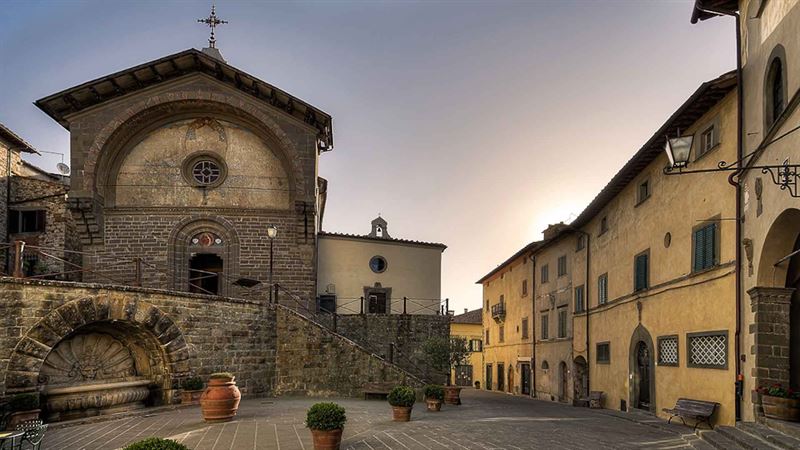
4. Radda in Chianti day trip - for wandering, wine and a goat farm
Neighbouring Radda in Chianti, 13 km north west of Castagnoli, makes for an entertaining outing, whether for couples or families. In this charming market town, begin with a visit to the region’s foremost shrine to wine, the Casa Chianti Classico. After an interactive wine induction there, including a wine quiz at the Wine Museum, stay for a wine-tasting and rustic lunch in the centre. Then head to the Chianti Cashmere Goat Farm, just north-east of Radda, to meet (and pet) the region’s silkiest and best-loved cashmere goats. Learn how sustainable farming is producing the finest cashmere and be tempted to buy a keepsake. Then either return to Castagnoli or drive a few kilometres north to explore Volpaia, one of the Chianti’s moodiest villages, and stay for dinner there.
For more information, see our guide to Radda in Chianti.
-
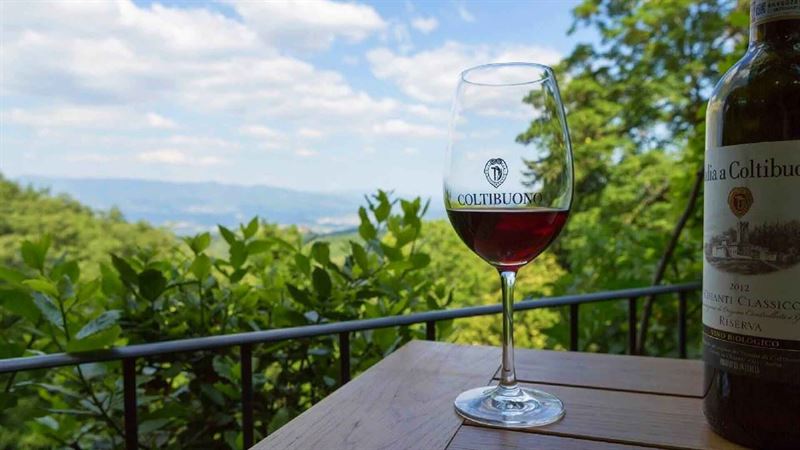
5. Badia a Coltibuono – dreamy abbey wine and oil estate
Set just north of Castagnoli and Gaiole, this former Benedictine abbey surveys gorgeous estate vineyards. The tranquil oil and wine estate commands landscape that has been cultivated since time immemorial. In Tuscany it is hard to separate the wine and oil from the scenery. The aptly named Badia a Coltibuono (Abbey of the Good Harvest) is framed by pines, oaks, chestnuts and vines. Founded in 1051, the medieval abbey belonged to reformist Vallambrosan monks who established viticulture here. Little did they know that their estates would still be flourishing so many centuries later. Since the Dissolution of the Monasteries in 1810, this abbey has belonged to one family. The forward-looking Stucchi Prinetti family started off as Florentine bankers before pioneering the commercialisation of quality Chianti here. The family remains committed to sustainable farming.
The beguiling 15th-century cloisters, chapel and frescoed ceilings can be viewed as a guest of the Tuscan cookery school, while the 12th-century walls and bell-tower are open to all. You can also book a tour of the original monastic cellars and frescoed villa, followed by a wine-tasting. Below the former abbey are cellars filled with Chianti Classico, the abbey’s traditional living. No less famous are the aromatic chestnut honey and olive oil, the delicious Extravergine Badia a Coltibuono. Much of the produce can be bought on the premises or savoured in Ristorante Chianti, the excellent abbey restaurant. You can also do a cookery course run by Benedetta Vitali, founder of the noted Florentine restaurant Cibreo. within the former Romanesque abbey.
Address: Localita Badia a Coltibuono
53013
Gaiole in Chianti
Tel: +39 0577 746110
Web: www.coltibuono.com -
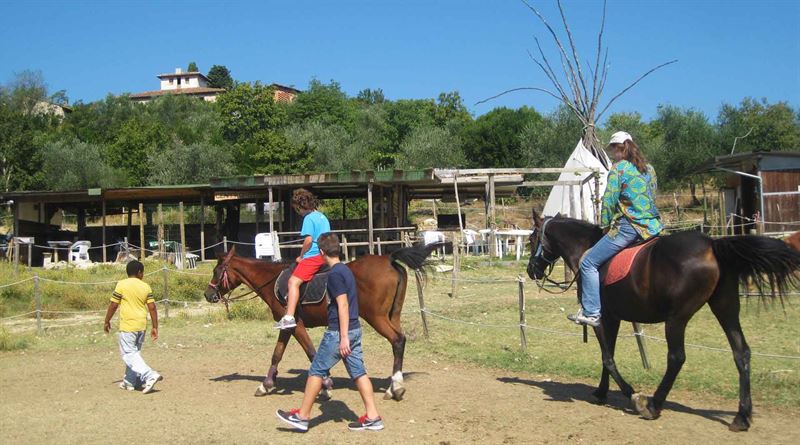
6. Horse-riding trails around San Gusmè
If you like horses and want to appreciate a slower pace of life, then consider a guided ride through the Chianti. Berardenga Horse Riding Centre (Centro Ippico della Berardenga) is based on the eastern border of Chianti, just east of San Gusmè. This is a reliable riding school, from the well-trained horses to the rides over varied terrain. Novices can go on shorter rides while more experienced riders can cover one-day trails, with picnics. These well-planned riding trails take in castles, wine estates and stretches of pilgrimage trails. The instructors, Sadio and Donatella, also speak English and French, and have been in charge of the Horse Riding Centre for a long time. This is an all-weather school so open all year. The riding school is recommended by FISE, the Italian Equestrian Federation.
Address: Strada del Ciglio, 2
Podere Santa Margherita
53019 Castelnuovo (SI)
Tel: +39 339 831 8519 / +39 335 432719
Web: www.chiantiriding.it -
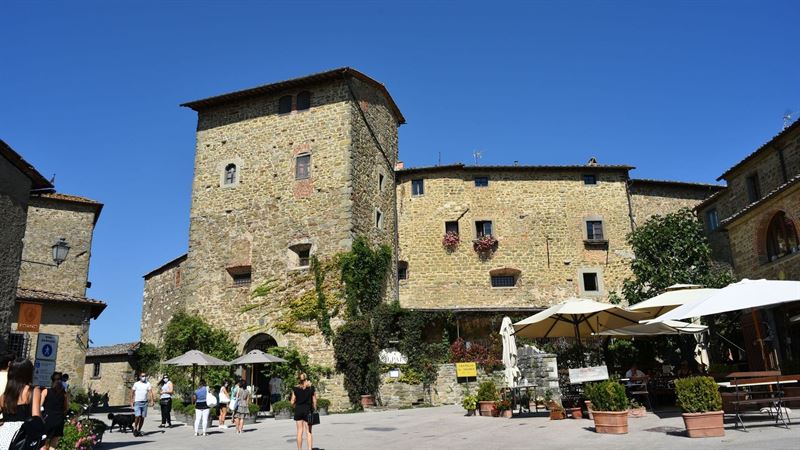
Eating and Drinking
Naturally, this is the homeland of Chianti Classico, even if Super Tuscans are also produced locally. Chianti ranges from ruby-red to garnet in colour, darkening with age. The wine is dry, balanced but slightly tannic, with hints of violets, and goes well with grilled meats or pizza. Chianti Classico Riserva, which is more full-bodied and complex, goes well with game and Pecorino cheese.
The trademark on bottles of Chianti Classico is the Black Rooster (or Black Cockerel), the historic symbol of the Chianti Military League, depicted by Giorgio Vasari on the ceiling of the Salone dei Cinquecento at Palazzo Vecchio in Florence. Our recommended wine estates are featured in each of the individual Chianti guides. Make a point of sampling Chianti Classico wines in the Casa Chianti Classico, the official wine-tasting centre in neighbouring Radda. Also make Castello di Volpaia wines the starting point for an outing to the fortified hamlet of Volpaia, north of Radda.
This is just a taster to the Chianti. See our restaurant recommendations below and also see our other guides to top Chianti towns and villages, all accessed through our Destinations listings.
-
Il Celliere a Castagnoli
This friendly, homely inn in Castagnoli is popular with locals and visitors. The seasonal menus make use of such local produce as truffles and wild boar and includes some Sienese specialities and plenty of vegetarian-friendly dishes. The mid-priced menu ranges from Pecorino souffle in a courgette sauce to duck breast, T-bone steak, or ravioli stuffed with Pecorino and beans in a Chianti Classico sauce. A typical meal concludes with cantucci biscuits and Vin Santo.
Address: Il Celliere a Castagnoli, Via del Castello, 2, 52025 Castagnoli SI, Italy
Tel: +39 329 189 8863 -
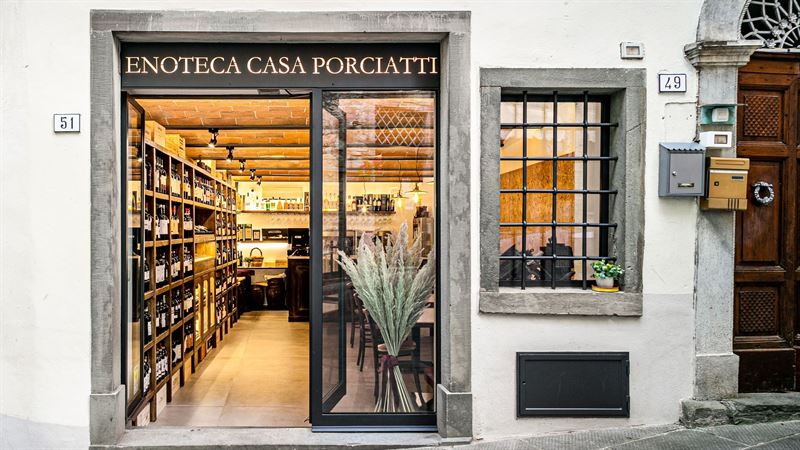
La Casa Porciatti
Tucked into an early 14th-century building in the heart of Radda is this homely wine bar. It also doubles as a good-value inn and wine shop. Along with a wide selection of Tuscan wines, you can tuck into taglieri, platters of home-cured meats or cheeses, along with porchetta (roast suckling pig). For something more substantial, choose stubby pici pasta with a meaty ragù sauce, ravioli with black truffle or hearty ribollita soup. Florentine tripe, wild boar stew and Sienese ossobuco are also on the menu.
Address: Piazza IV Novembre, 53017 Radda in Chianti
Tel: +39 0577 738055
Web: www.casaporciatti.it -
L’Osteria del Castello
Set about 7 km south of Castagnoli, this appealing inn lies in Castello di Brolio, the ancestral castle estate of the Ricasoli wine dynasty. Combine a tour of the castle with lunch in the estate inn. Alternatively, the sunset tour of the castle includes dinner in the Ricasoli’s restaurant. Your castle ticket also allows for a free wine-tasting in the Ricasoli tasting rooms below the castle. With lunch, indulge in the Barone Ricasoli Castello di Brolio Chianti Classico 2006. Dishes are creative twists on traditional Tuscan cuisine. Along with classic Florentine-influenced meat dishes, expect more fish than found in most of the Chianti. Such dishes as olive gnocchi in pecorino sauce or rabbit salad with crispy spelt can also be paired with Ricasoli wines.
Address: Castello di Brolio, Località Madonna a Brolio, Gaiole in Chianti, Siena
Tel: +39 0577 730 290
Web: www.ricasoli.com -
Badia a Coltibuono Ristorante
This popular stop on the Chianti trail lies along scenic roads 9 km east of Radda. The rural restaurant is set on the glorious wine and olive oil estate of Badia a Coltibuono, complete with its 11th-century abbey. Housed in the former stables, the inn makes use of a charming terrace in summer. Dine under a rose-trailing pergola and tuck into largely organic produce, including from the estate. Modern Tuscan dishes include cured meats, organic pasta with wild duck sauce, fennel soup, lamb or rabbit mains, and home-made fruit tarts or chestnut pastries. The impressive seasonal tasting menu is complete with a wine pairing of four wines. The estate wine, oil and chestnut honey are also on sale.
Address: Badia a Coltibuono Loc. Badia a Coltibuono, Gaiole In Chianti SI
Tel: (+39) 0577 74481
Web: www.ristorante.coltibuono.com -
Azienda Agricola Casanuova di Ama
This small, family-run wine estate in the hamlet of Casanuova di Ama, near Lecchi in Chianti, offers wine-tastings, along with sales of Chianti wines, Super Tuscans, Vin Santo, grappa and olive oil. Daniela, the owner, does brief tours, perhaps followed by a vegetarian-friendly lunch in the cosy estate inn for home-cooked Tuscan dishes, such as crostini slathered in tomatoes, home-made gnocchi, freshly-baked bread and cantuccini biscuits for dipping in Vin Santo.
Address: Localita Casanuova di Ama, 53013 Gaiole in Chianti
Tel: +39 0577 746119
Web: www.agrariacasanuovadiama.it -
Rocca di Castagnoli
This Castagnoli wine estate also has a restaurant.
Address: Loc. Castagnoli
53013 - Gaiole in Chianti (SI) Italia / Italy
Tel: +39 0577 731004
Web: www.roccadicastagnoli.com -
Shopping
Shopping in Castagnoli is restricted to wine estates so for more shopping options, from groceries and Tuscan produce to crafts, head to neighbouring Gaiole in Chianti, Radda in Chianti and Castellina in Chianti.
-
Castello di Meleto
Centred on a 13th-century castle just west of Castagnoli, Meleto is a working wine estate but tastings and castle visits are also available. The castle once belonged to the monks at Badia a Coltibuono.
Address: Meleto Castle 53013 Gaiole in Chianti (SI)
Tel: +39 0577 749129
Web: www.castellomeleto.it -
Castello di Brolio Shop
Castello di Brolio, a famous Chiantishire castle, lies just south of Castagnoli. The Brolio wine-tasting experience and gift shop can form part of a great day out, as does the route there. This is classic Chianti countryside, with its mix of vineyards, olive groves, oak and chestnut woods. Records attest to the Ricasoli family having been in wine since 1141 so count on buying some fine vintages and possibly even some lovely wine glasses. Along with Chianti Classico, the estate also produces Super Tuscans, such as Casalferro. Even so, the market leader in the Super Tuscan stakes is Ornellaia and Masseto, produced by the rival Frescobaldi wine barons. While at Brolio, book a visit to the castle cellars, tour the estate, taste the wines, and see the family museum.
Address: Castello di Brolio, Localita Madonna a Brolio, 53013 Gaiole di Chianti
Tel: +39 0577 7301
Web: www.ricasoli.com -
Luxury designer outlets
For a complete change of scene, designer shopping fans could head to the luxury outlets in the Valdarno area. The Mall Firenze is a thirty-minute drive east from Florence, on the Pontassieve road. There’s also a direct shuttle bus there from Siena. After browsing the designer brands, end your shopping experience in the Mall’s Gucci café and restaurant.
Address: The Mall
Via Europa 8
50066
Leccio Reggello
Tel: 055 8657775
Web: www.themall.it -
Parking
Parking is usually very straightforward, with plenty of spots available on the edge of the village. Note that most Tuscan towns operate a strict ZTL system, a Limited Traffic Zone. This means that the Centro Storico (historic centre) is essentially closed to traffic, particularly for non-residents. Cars will need to be left outside the walls. That said, the Chianti towns are small so present far less trouble than such cities as Florence and Siena.
Parking tips: for advice on individual Chianti places, please see our individual Destination guides.
Advice on ZTLs: You may see other cars crossing the ZTL boundary (Limited Traffic Zone) and assume you can proceed. Not so. The drivers crossing into the ZTL zone will probably be locals and have residents’ permits. Visitors do not so are liable to fines. Zones are monitored by cameras, so tickets are issued immediately and automatically, as soon as (and each time) the car crosses the ZTL boundary.
-
Getting Around
Castagnoli is around 30 km from Siena and 60 km from Florence so Siena, San Gimignano and even Florence make for accessible day trips, as well as the Chianti, of course.
The Chianti can be delightful driving country. Its appeal lies in the rolling countryside, array of vineyards and olive groves, relatively quiet roads, and the mix of small medieval towns. Public transport in the Chianti is rather sporadic so car hire makes the most sense if you want to explore the area properly. Driving in the Chianti can be deeply enjoyable experience, especially with a detailed map or GPS navigator to hand. For a great day out, try a customised tour with Chianti Taxi.
Greve, the main gateway from the north, lies on the SR222, commonly known as the Chiantigiana, about 30 km south of Florence and 40 km north of Siena. From Greve, the scenic Chiantigiana meanders through the Chianti, passing through most of the typical villages. This is a charming route to take by day. At night, however, you might encounter wild boars, porcupines or deer crossing the road.
From Florence and the Chiantigiana head towards Greve, then further south to Radda and Gaiole. Or pick up the Florence-Siena Raccordo Autostradale highway (known as the RA) and take the San Donato in Poggio exit before following the SP101, which becomes the SP76.
From Siena, leave town on the fast Florence-Siena Raccordo Autostradale highway (known as the RA), taking the Badesse exit for the SP 119, which becomes the SR222, the Chiantigiana. Or take the quieter, slower route from Siena: take the SR2, which becomes the more tranquil SR222 until Castellina and then onto Radda and Gaiole.
By private tour: Chianti Taxi, a reliable Panzano-based transport service offers day-long private tours around the Chianti and beyond. These are customised tours that can take in everything from olive oil mills and wine estates to Pecorino farms and hand-painted ceramics. With his comfortable minivan, owner Daniele Mogni has the inside track on what you can do in the Chianti. It’s worth splashing out for a day so you can relax and drink your fill at the wine estates.
Tel: +39 389 8160050
Web: www.chiantitaxi.com
The Chianti by train: this is not an easy place to reach by rail. The train service barely touches Chianti's attractions, which is part of the reason why the area is so peaceful. The main Chianti station is Castellina in Chianti, which is on the Siena-Florence line but you need to change trains at Empoli.
The Chianti by bus: Buses connect Florence to Greve and Panzano but end there. These buses often provide a more useful service than the trains but the confusing 365 bus service still means that bus schedules are not always convenient and also operate a limited service on Sunday.
Buses also connect Siena and Castellina: a Tiemme bus service operates around 7 services a day. Buses also connect Castellina and Radda: a Tiemme bus service. Buses also connect Siena and Gaiole: a Tiemme bus service.
Web: www.tiemmespa.it
On your bike: The Chianti is a lovely place to explore by bike. The combination of romantic Tuscan scenery and challenging gravel roads is what makes it enjoyable. The cycling races in the region also attract big crowds. Whether as a spectator or a participant, L’Eroica is worth following. This renowned amateur event that allows cyclists from around the world to experience the region while riding classic bikes. The parking in Gaiole is outside the town centre on the Strada Provinciale 408 or in the car park on via Marconi. Note that most Tuscan towns operate a strict ZTL system, a Limited Traffic Zone. This means that the Centro Storico (historic centre) is essentially closed to traffic, particularly for non-residents. Cars will need to be left outside the walls. That said, the Chianti towns are small so present far less trouble than such cities as Florence and Siena.
Parking tips: for advice on individual Chianti places, please see our individual Destination guides. -
Tuscan Villas near Castagnoli
In the heart of Tuscany, our villa collection near Castagnoli beckons discerning travellers to experience the quintessential charm of this enchanting region. Surrounded by rolling vineyards and olive groves, these meticulously curated villas offer an authentic taste of Tuscan life. Immerse yourself in the rich history of Castagnoli, with its medieval fortress and captivating landscapes. Whether you seek a tranquil retreat or a cultural exploration, our villas in this idyllic setting provide a perfect base. Indulge in the renowned local cuisine, explore the nearby historic villages of Gaiole and Lecchi in Chianti, discover local castles, or simply unwind in the serenity of your private villa. A stay near Castagnoli promises an unforgettable Tuscan escape.
Explore our Siena and Chianti villas to start planning your Tuscan holiday today.





















